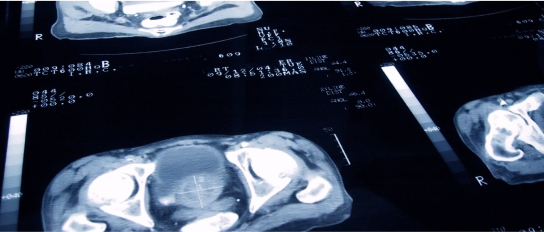Staging
If a biopsy finds prostate cancer, it will be classified using the Gleason grading system, which is a system that grades the aggressiveness of prostate cancer cells based on their appearance under a microscope. This helps doctors choose the best treatment options and predict how quickly the cancer is growing.

What are the grades and risk groups for prostate cancer?
Gleason scores are categorized into different grades based on their numeric value. The categories are:
Gleason Score 6 or Less:
This is considered low-grade prostate cancer, and is generally less aggressive. It may not require immediate treatment and can sometimes be managed with active surveillance.
Gleason score 7:
This is intermediate-grade prostate cancer, and may require treatment, depending on other factors such as the PSA level and clinical stage of the cancer.
- Gleason score 3+4=7: This indicates that the most common pattern of cancer cells is grade 3, and the second most common pattern is grade 4.
- Gleason score 4+3=7: This indicates that the most common pattern of cancer cells is grade 4, and the second most common pattern is grade 3.
Gleason Score 8-10:
This is high-grade prostate cancer, and may require more aggressive treatments such as surgery, radiation therapy, or hormone therapy.
Gleason Score 8:
This indicates that the most common pattern of cancer cells is grade 4, and the second most common pattern is grade 4.
Gleason Score 9-10:
This indicates that the cancer cells are predominantly grade 5, which is the most aggressive form of prostate cancer.
The Gleason score is an important factor in determining the aggressiveness of prostate cancer and the best treatment options. However, it is not the only factor, and other factors such as PSA level and clinical stage should also be considered when making treatment decisions.
Prostate Cancer Risk Assessment
If you are diagnosed with prostate cancer, your doctor will also make a series of estimates about the risk that the disease may be harmful in the future. Factors include Gleason score, PSA level, and clinical stage, which is based on findings of the digital rectal exam (DRE) and/or an imaging exam.
There are three main risk groups, each of which has its own set of treatment options.
Low Risk:
This type of therapy is the most conformal form of radiation treatment available and uses protons to precisely target the prostate while avoiding most of the surrounding healthy tissue and organs.
Intermediate Risk:
IMRT is a type of X-Ray based radiation treatment that focuses multiple radiation beams of different intensities directly on the tumor for the highest possible dose of radiation.
High Risk:
Also known as stereotactic ablative radiotherapy (SABR), SBRT is the administration of very high doses of radiation over a shorter period of time than standard course radiation treatment.
If the prostate cancer is determined to be intermediate or high risk, imaging tests such as bone scans and CAT or MRI scans may be used to determine if the cancer has spread.
Taken together, the disease risk status and imaging results will help your doctor plan the best treatment.

